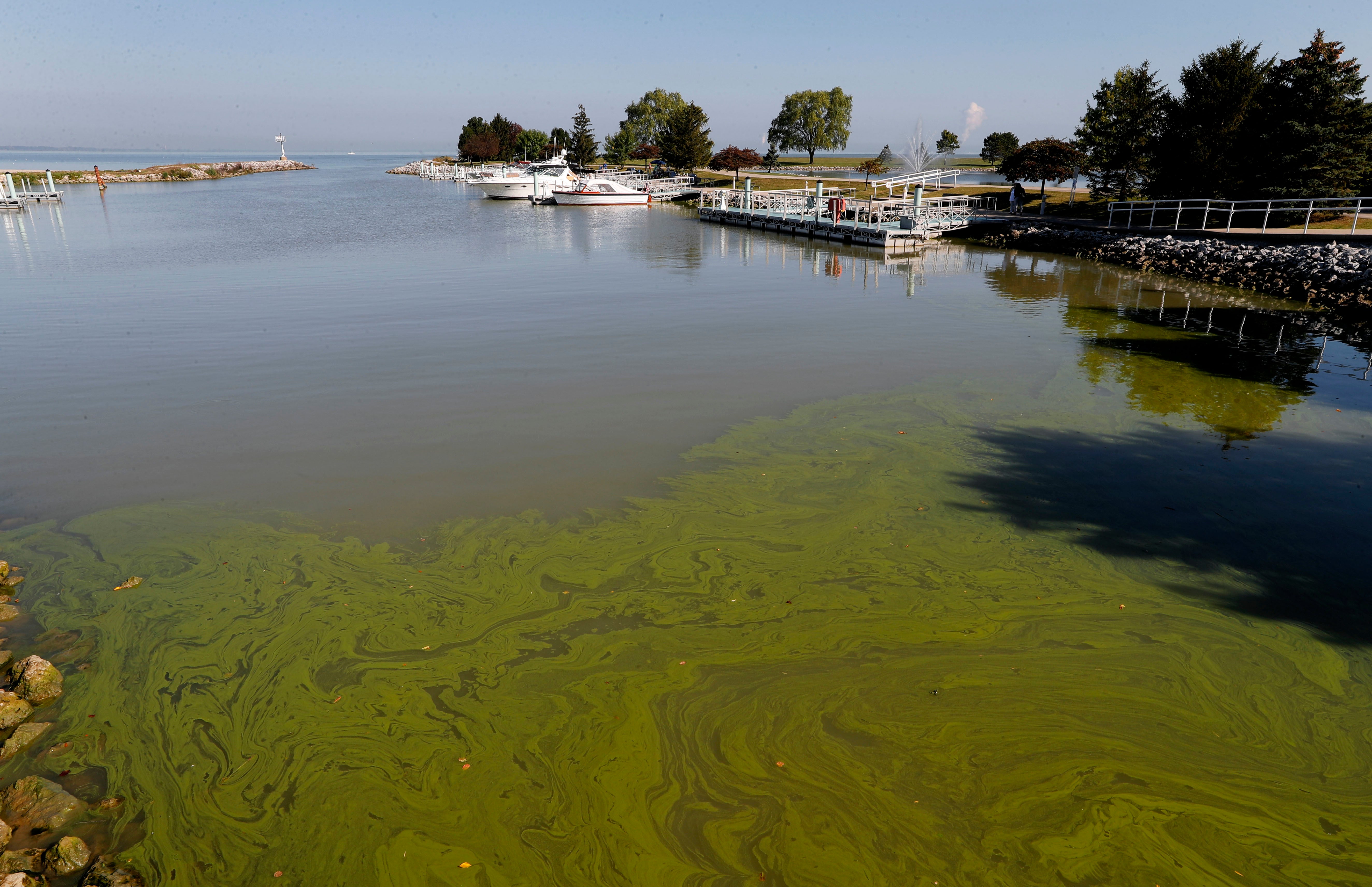Judge sets a deadline to put Lake Erie on pollution diet
Ohio will have until the end of June to finish a plan to aimed at combating toxic algae blooms that have flourished in Lake Erie since the late 1990s

Your support helps us to tell the story
From reproductive rights to climate change to Big Tech, The Independent is on the ground when the story is developing. Whether it's investigating the financials of Elon Musk's pro-Trump PAC or producing our latest documentary, 'The A Word', which shines a light on the American women fighting for reproductive rights, we know how important it is to parse out the facts from the messaging.
At such a critical moment in US history, we need reporters on the ground. Your donation allows us to keep sending journalists to speak to both sides of the story.
The Independent is trusted by Americans across the entire political spectrum. And unlike many other quality news outlets, we choose not to lock Americans out of our reporting and analysis with paywalls. We believe quality journalism should be available to everyone, paid for by those who can afford it.
Your support makes all the difference.Ohio's environmental regulators will have until the end of June to finish a plan to aimed at combating toxic algae blooms that have flourished in Lake Erie since the late 1990s.
The deadline is part of settlement agreement a federal judge approved Thursday.
The consent decree also calls for the U.S. Environmental Protection Agency to either approve the plan within 90 days or come up with its plan own if the federal agency determines the state's proposal isn't strong enough.
The agreement brings an end to a lawsuit seeking to force mandatory pollution rules for the lake.
Algae outbreaks have fouled drinking water twice since 2013 and are a threat to fish and wildlife.
Nearly all of the phosphorus that fuels the blooms comes from farm fertilizer and livestock manure, researchers have found.
Ohio already has been working for months to develop the pollution plan that would set “total maximum daily loads” and impose specific limits on phosphorus that flows into the lake.
For years, environmentalists have been calling for new regulations on farmers to limit two main sources of the phosphorus that feeds the algae — chemical fertilizers used on fields, and livestock manure. But farm organizations have vigorously fought attempts to regulate runoff.